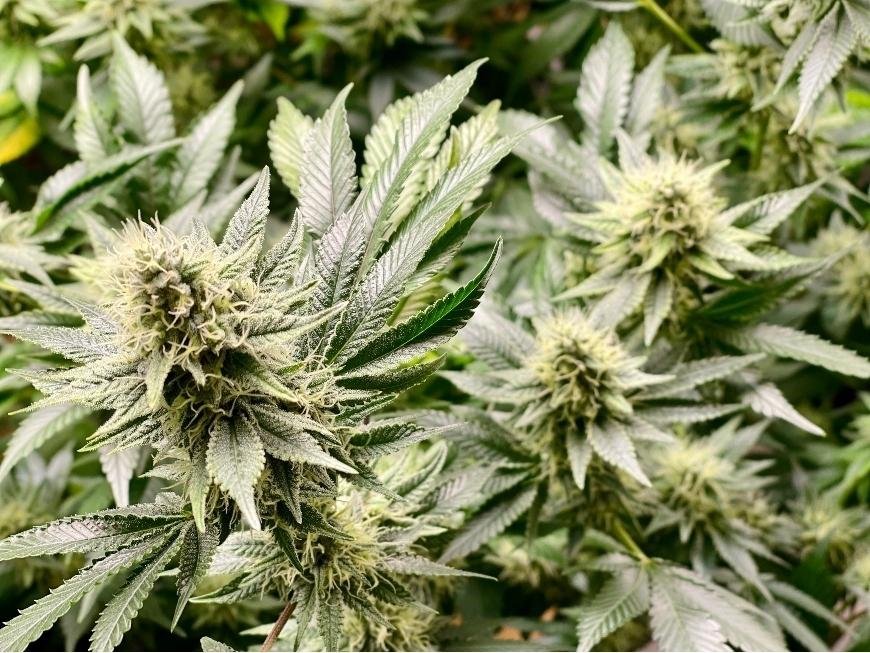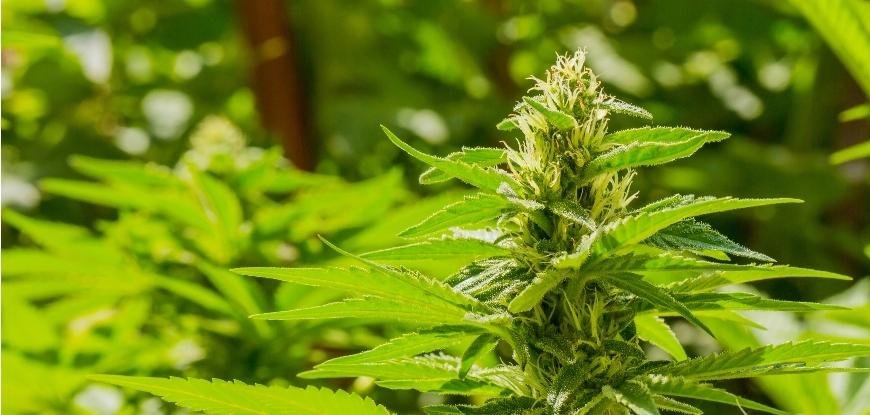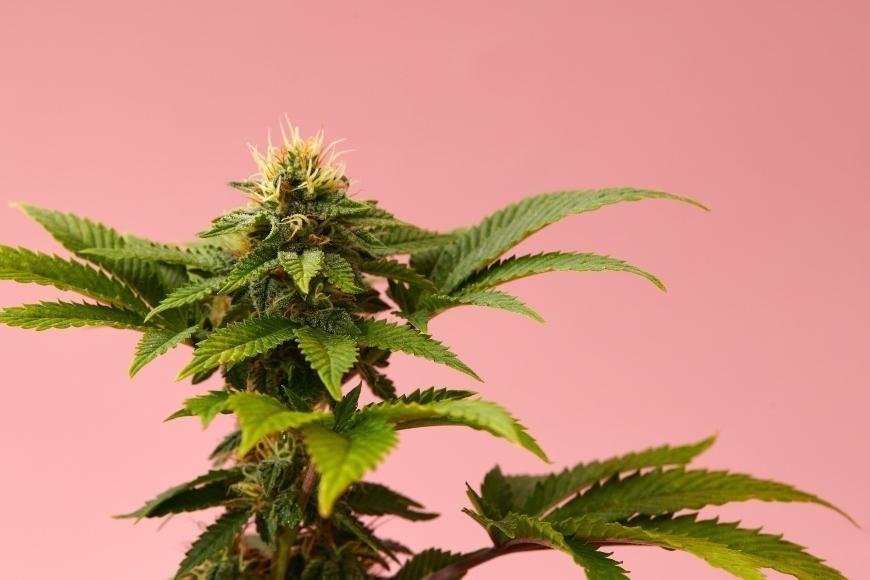The Flowering Phase of Cannabis Plants
Read essential tips for navigating the flowering phase of cannabis plants, from managing humidity to maximizing yields during this crucial stage in growth.

The Flowering Phase of Cannabis Plants is a crucial stage in the life cycle of these fascinating plants, as it ultimately determines the quality and quantity of your harvest. In this blog post, we will delve into various aspects associated with cannabis flowering to help you achieve optimal results from your plants.
Maintaining the proper humidity and temperature levels is essential for healthy, productive cannabis plants during their flowering phase; this article will provide guidance on how to do so. We'll also cover common problems encountered during this period and provide guidance on addressing them effectively.
Furthermore, we'll explore different stages within the flowering process and share valuable tips for maximizing yields during The Flowering Phase of Cannabis Plants. By understanding these key elements, you can confidently cultivate thriving cannabis plants with impressive buds ready for consumption or further processing.
Table of Contents:
- Understanding the Flowering Stage of Cannabis Plants
- Managing Humidity and Temperature Levels During Flowering
- Common Problems During Flowering
- Different Stages of Flowering
- Maximizing Yields During Flowering
- FAQs in Relation to The Flowering Phase of Cannabis Plants
- Conclusion
Understanding the Flowering Stage of Cannabis Plants
Cultivating cannabis plants necessitates comprehending the flowering phase, which can aid cultivators in maximizing their yields. In order to understand what triggers a cannabis plant’s flowering stage, it’s important to know about light/dark cycles.
Light/dark cycles are one of the main factors that trigger a cannabis plant's flowering period. Cannabis plants necessitate a minimum of 12 hours in the dark to initiate bud or flower formation. To ensure flowering, lights must be off for 12 hours daily to prevent disrupting the light/dark cycle.
When it comes time for a cannabis plant to enter its flowering stage, the signs are unmistakable: vegetative growth will noticeably decelerate; bud sites (where flower clusters form) will start popping up on stems; white pistils (hairs) will sprout around these bud sites; and finally, the main stem may bulk up with wider internode spacing between nodes – where leaves burst forth from branches.
Knowing when your cannabis plants have started their flowering phase can be helpful in ensuring they receive enough light during this period as well as proper nutrients throughout their entire life-cycle - both essential components for achieving high yields. Additionally, if you want to start growing different strains then understanding how long each strain takes before they enter into their full bloom phase is also beneficial since some strains take longer than others before they reach maturity.
In conclusion, understanding the basics behind how light/dark cycles affect a cannabis plant's transition into its blooming phase is key knowledge for any grower looking to maximize yield potential while minimizing mistakes made along the way. With adequate research and experience, one can quickly become an adept cultivator.
Understanding the Flowering Stage of Cannabis Plants is a critical component to successful cannabis cultivation. To ensure success, it's important to understand how managing humidity and temperature levels during flowering can affect the growth of your plants.
Managing Humidity and Temperature Levels During Flowering
During the flowering stage of cannabis plants, cultivators should be especially watchful with respect to humidity and temperature levels as both can detrimentally influence the growth and quality of their crop. Too much or too little of either can have a negative effect on the health and quality of your crop, so it’s important to monitor these levels closely throughout this period.
The level of humidity in the air is a critical determinant for successful cannabis plant growth during flowering, as too much moisture can lead to mold and mildew while not enough may cause dehydration. If the atmosphere is excessively damp, it can trigger mould and mildew proliferation which may result in decreased harvests or even total crop destruction. On the other hand, if there isn’t enough moisture in the air, then your plants may suffer from dehydration which can also result in lower yields. The ideal relative humidity (RH) level for cannabis during flowering should be between 40-60%. It’s best to keep RH as consistent as possible by using a humidifier/dehumidifier combo unit with a digital hygrometer that measures both humidity and temperature accurately.
Using a thermometer/hygrometer combo device, along with fans and ventilation systems, to track temperature and relative humidity simultaneously while keeping out unwanted pests will ensure consistency throughout the flowering stage of cannabis. This can help optimize plant growth and development resulting in bigger buds with more potency than desired by growers - all without breaking a sweat.
Managing humidity and temperature levels during flowering is an essential part of successful cannabis cultivation. Properly controlling these variables can help ensure a healthy, high-yielding harvest. To maximize the chances of a successful harvest, it is necessary to be aware of any potential issues that may arise when attempting to regulate humidity and temperature levels during flowering.
Common Problems During Flowering
When it comes to cannabis plants, the flowering stage is one of the most important. During the flowering stage, a cannabis plant's health can be at risk of being compromised due to various issues that may cause yields to decline or even lead to complete destruction of an entire crop. Fortunately, many common issues during flowering are preventable with proper care and attention.
Nutrient Deficiencies:
Nutrient deficiencies are some of the most common problems encountered during flowering. Plants require certain nutrients in order to produce healthy flowers and buds. If these essential elements aren’t present in adequate amounts, then plants may become stunted or fail to flower altogether. Common nutrient lacks may comprise of nitrogen, phosphorus, potassium, calcium and magnesium. Correcting nutrient deficiencies can be done by applying fertilizers that contain the required elements, including trace minerals such as iron and zinc.
Pests:
Pests such as aphids, spider mites and whiteflies can cause serious damage to cannabis crops if not treated quickly enough. In addition to sucking sap from leaves and stems which weakens them over time; pests also spread diseases which further weaken plants making them more susceptible to other environmental factors like temperature fluctuations or nutrient imbalances . To combat pests organically use insecticidal soaps or horticultural oils on foliage every few days until they have been eliminated completely .
Light Burn:
Too much light exposure can lead to what’s known as “light burn” where parts of the plant closest to the source will begin turning yellow due overexposure . This is especially true for LED lights which emit intense levels of radiation compared to traditional HID lamps . To avoid light burn try keeping your lights at least 18 inches away from topside foliage while increasing air circulation around canopy area with fans .
Maintaining a temperature range of 70-80°F (21-27°C) is optimal for cannabis growth, but extremes of either heat or cold can be detrimental to your harvest. Chilly conditions below 60°F (15°C) will definitely put the brakes on growth, while temperatures that climb too high - 90°F (32°C) and above - can cause trichomes to wither away, resulting in a weakened potency. Investing in a quality thermostat/humidistat combo unit will help you maintain consistent temps without having to worry about potential disasters happening behind the scenes when you're not looking.
Common problems during flowering can be difficult to manage and require a great deal of attention. Nevertheless, through being aware of the various phases in blooming, cultivators will be more likely to reach their desired outcomes.

Different Stages of Flowering
At the flowering stage, cannabis plants begin to form buds that contain a variety of compounds responsible for its effects. It’s during this time that buds will develop and produce the cannabinoids, terpenes, and other compounds that give marijuana its unique effects. Understanding each stage of flowering can help growers maximize yields and ensure a quality harvest.
The stretch phase is the first stage of flowering for cannabis plants. During this period, buds begin to form at the nodes where leaves meet stems. The plant will also start to grow taller as it stretches towards light sources like LED or HID lights. In order to prevent stretching too much, many growers opt for topping or training techniques such as LST (low-stress training) or SCROG (screen of green).
Once stretching has stopped, buds enter into the bud development phase which typically lasts two weeks before entering pre-flowering/ripening. This is when buds really start taking shape and developing their trichomes – small white crystals on flowers that contain cannabinoids like THC and CBD along with aromatic terpenes like limonene and pinene which provide flavor profiles ranging from earthy to citrusy depending on strain genetics. Growers should monitor nutrient levels during this period since overfeeding can cause nutrient burn which leads to stunted growth in addition to discoloration on flowers themselves.
Once pistils have transitioned from white to brown, signaling the maturity level of female flower clusters has been reached, pre-flowering/ripening is then in full swing. At this point it's important for growers not to cut corners or jump the gun and instead observe all signs carefully before harvesting their crop. To ensure optimal results, taking one's time during this stage is key as some strains may require additional ripening beyond what can be seen with the naked eye.
Lastly, we have the post-harvest drying and curing process wherein freshly cut flowers are hung upside down to dry out while still preserving potency levels prior to being sealed away in airtight containers for storage purposes. This is the ideal situation, of course, as every strain is a different case basis so it pays to pay attention to details and make sure everything is done correctly in order to avoid any potential issues later down the road. Happy growing everyone.
The different stages of flowering are essential for cannabis growers to understand in order to produce the highest quality yields. With proper knowledge and care, maximizing yields during the flowering phase is possible with great success.
Maximizing Yields During Flowering
When it comes to maximizing yields during the flowering stage of cannabis plants, proper pruning and nutrient management are key. Pruning is essential for healthy growth as it helps control the size and shape of a plant while allowing light penetration and air circulation. To prune correctly, start by removing any dead or dying branches from the base up. Once that’s done, you can then selectively remove leaves from each branch in order to promote bud production. Additionally, when topping your plants—cutting off the topmost shoots—you should wait until after they have been established for at least three weeks before doing so.
Reducing nitrogen and increasing phosphorus levels is key for optimal yield during flowering, so if you're using liquid fertilizer make sure to opt for products specifically designed for this stage with high potassium and phosphorus but low nitrogen content. Alternatively, when it comes to organic fertilizers like compost tea or fish emulsion, adjust your feeding schedule accordingly as these tend to release their nutrients more slowly than synthetics do.
By following these simple steps during flowering you can maximize yields on all types of cannabis plants - from autoflowering varieties through regular photoperiod strains - ensuring an abundant harvest come harvest time. Aim to keep soil moist but not soggy; check daily with a moisture meter if possible in order to ensure that you don’t miss any dry patches. Too much moisture can lead to root rot or other diseases which will drastically reduce your yields, so be sure to provide enough water without over-watering.

FAQs in Relation to The Flowering Phase of Cannabis Plants
What is the flowering phase of cannabis?
The flowering phase of cannabis is the period when buds form and mature. When the plant no longer receives illumination for twelve hours or more, usually after around half a dozen to eight weeks of vegetative development, it signals the start of its flowering stage. Trichomes, containing cannabinoids like THC and CBD as well as terpenes for their distinct aromas, start to appear on the plants during this stage. Flowering typically lasts 4-10 weeks depending on strain genetics and environmental conditions such as temperature, humidity, nutrition levels, etc., before harvest time arrives.
What to expect during cannabis flowering stage?
Cannabis flowering is the final stage of growth for cannabis plants and usually occurs when days become shorter. During this period, buds will begin to form and swell as they mature. As the plant progresses, it will create more elevated amounts of cannabinoids such as THC and CBD, which are liable for its effects on consumers. The time it takes for cannabis to flower can vary depending on strain, environment, genetics, etc., but typically ranges from 6-12 weeks in total. During this period growers should monitor their plants carefully to ensure optimal conditions such as adequate light exposure and humidity levels while also providing proper nutrients during each phase of development.
What happens in the flowering phase of a plant?
The blooming stage of a plant is when it develops blossoms, fruits, and seeds. During this time, plants undergo dramatic changes in terms of their size and structure as they produce reproductive organs such as stamens (male) and pistils (female). As these organs mature, pollen is released from the male parts which then fertilizes the female parts resulting in seed production. Additionally, during this stage photosynthesis increases dramatically leading to an increase in energy for growth and reproduction. Finally, the flower petals begin to open up allowing pollinators like bees access to nectar thus aiding with further reproduction.
What are the first signs of cannabis flowering?
Cannabis flowering is typically signaled by a few key changes in the plant. First, you may notice that your plants are beginning to produce flowers or buds which can range from white and fluffy to dense and sticky. Additionally, the leaves will start to become wider with more serrated edges than before. Finally, as your cannabis matures its stems will thicken and turn purple or red in color. These physical signs indicate that it’s time for harvest.
Conclusion
At the flowering stage, proper environmental conditions are essential for optimal growth and bountiful yields of cannabis plants. It requires proper lighting, humidity and temperature levels to ensure healthy growth and maximize yields. With some knowledge on common problems that may arise during this period as well as different stages of flowering, growers can be better prepared for successful harvests. By taking the necessary precautions to provide ideal growing conditions, cultivators will be able to reap rewards from their efforts with abundant yields.





















































































































